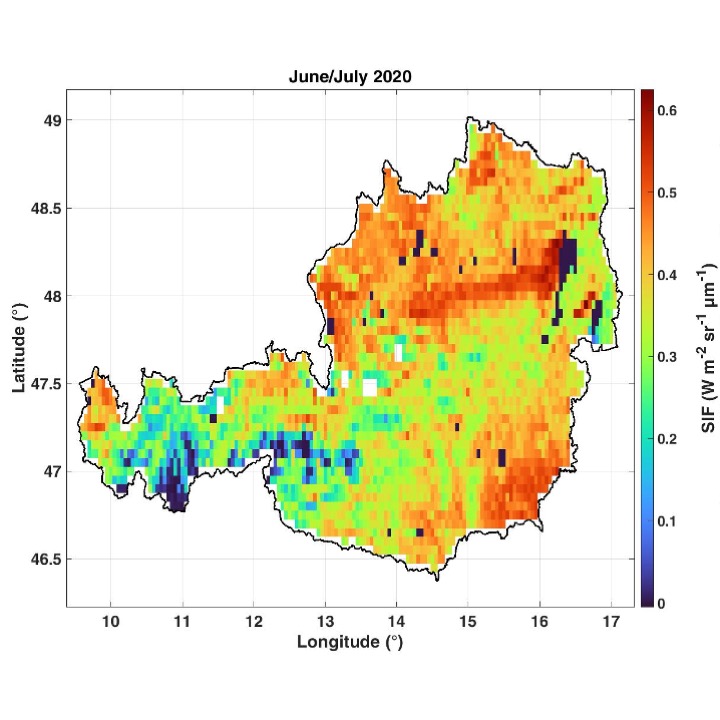Early stress detection in Austrian ecosystems with sun-induced chlorophyll fluorescence.
Plants have evolved fine-tuned mechanisms for dealing with environmental stress such as heat or drought. One of the most promising indicators of early stress is chlorophyll fluorescence, that is visible light absorbed by chlorophyll molecules that is re-emitted in the red to near-infrared wavebands. AustroSIF aims at establishing satellite-based sun-induced chlorophyll fluorescence as a sensitive and reliable metric for early stress detection in agricultural, forest and natural ecosystems.
Conventional satellite measurements of terrestrial ecosystems target their structure, which however changes comparatively slowly in response to environmental stress and thus symptoms of stress become apparent only when the stress is already severe. Sun-induced chlorophyll fluorescence conveys the advantage of responding to environmental stress immediately and thus allows a truly early stress detection.


